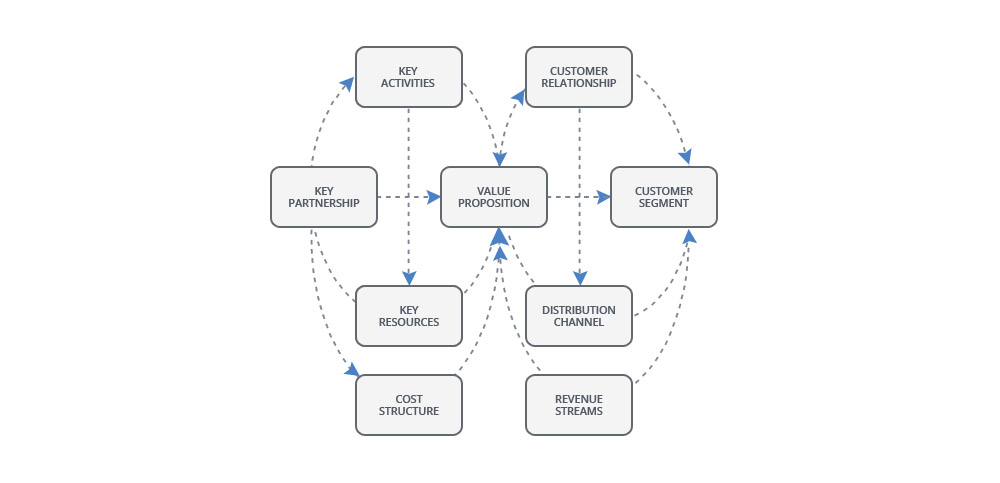Business Model of Wal-Mart
Published May 13, 2020 | Author: PenMyPaperIn this article, our paper writer will discuss the Walmart business model in detail to give you a comprehensive understanding of the complex strategies and operational practices that have driven Walmart to become a global retail powerhouse. Through an exploration of its supply chain management, pricing strategies, expansive store network, and commitment to customer satisfaction, you'll gain valuable insights into how Walmart has effectively navigated the complexities of the retail industry.
The business model of companies illustrates the justification of the way the organization captures, creates and delivers value. The business model of Wal-Mart follows the nine building block model of Osterwalder and Pigneur, as can be seen in Figure 1. Based on the business model of Wal-Mart as explained in Figure 1, the current business structure of the company would be discussed. This would include not only the business framework, but also the participants who work within the model.

The business model of Wal-Mart consists of nine essential points or building blocks namely, a) Key Activities, b) Partnership, c) Value Proposition, d) Resources, e) Cost Structure, f) Customer Relationship Management (CRM), g) Target customers or customers segments, h) Supply Chain, and i) Revenue.
While we are discussing the Walmart business model, it is important to understand the Walmart mission statement, as it serves as the guiding compass that directs the company's decisions, strategies, and interactions with both customers and communities.
- Key Activities: The key activities of Wal-Mart which are essential part of the business model are purchasing goods, controlling the cost and delivery of the goods. The other activities include customer satisfaction, inventory control, and managing the distribution channel Wal-Mart also has the responsibility of handling its suppliers and workforce of about 85,000. It has to manage about 147 distribution centres, over 8,000 truck drivers, and 100,000 trailers and tractors (Wal-Mart, 2009a).
- Partnership: Wal-Mart maintains a strong relationship with its suppliers and the suppliers are considered as the closest partners of the company. They also form an integral part of the value chain and assist Wal-Mart to access broad markets. The suppliers also assist in controlling the business by supporting Wal-Mart to lower the cost and adjust the price of the products.
- Value Proposition: The value proposition of Wal-Mart is mainly based on providing low priced product to the customers every day. This is also the core of the business model in Wal-Mart, and the business strategies of the companies are formulated to keep them aligned with the core value.
- Resources: The major resources of the company can be segregated into three major divisions, namely the physical resources of the company such as the stores and the distribution channel of the company, the human resource which consist of the store managers, managers, etc., and the organizational culture of Wal-Mart (Fishman, 2006).
- Cost Structure: Wal-Mart has a cost driven structure which mainly focuses on minimizing the costs. The expansion of the company allocates economies of scale at chain levels. The financial discipline of the company is well-known because they pass on their operating cost to the suppliers.
- Customer Relationship Management (CRM): Wal-Mart has established the customer relationship on the basis of self-service and technological advancement. The motive of Wal-Mart is to reach the mass, so automation of processes offers fast and easy services to large number of customers.
- Target customers: Wal-Mart targets three segments of customer groups; firstly low-income groups with aspirations to buy branded products, wealthy customers who prefer good deals and customers who wish to have affordable and good quality products (Barbaro, 2007).
- Supply Chain: In order to deliver value, the company reaches to its customers through its efficient distribution channel and this assist in generating adequate profit margin for the company. Wal-Mart utilizes mass media, which is low cost, yet effective, such as internet.
- Revenue: Revenue is generated from customers through retail sales. Wal-Mart generates revenue also from the sales of products of own brands, products produced by other retail companies, etc. It enjoys the advantage of selling before paying off to its suppliers.
Also read: Walmart vision statement
You might also be interested in understanding the Walmart human resources strategies, which play a pivotal role in shaping the company's organizational culture, employee engagement, and overall business performance. By delving into how Walmart attracts, nurtures, and empowers its diverse workforce, you'll gain insights into the methods used to create a dynamic and inclusive workplace environment. From employee training and development programs to initiatives focused on diversity and inclusion, exploring Walmart's human resources approach offers valuable lessons for businesses aiming to foster a motivated and dedicated team. This aspect of Walmart's operations sheds light on how the company values its employees, recognizes their contributions, and ultimately cultivates a workforce that is aligned with its mission and vision.
Hopefully, with the help of this article you have not only grasped the foundations of Walmart’s success bust also learned lessons that can potentially inspire and inform your business endeavors. In case you are struggling to write a research paper on this topic, you have the option to buy essay online.

